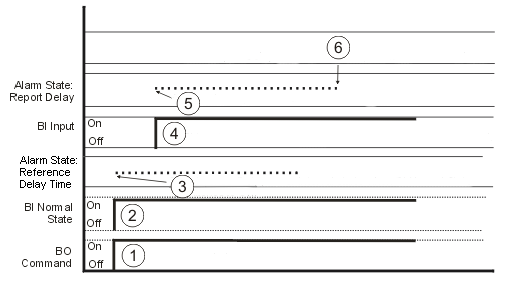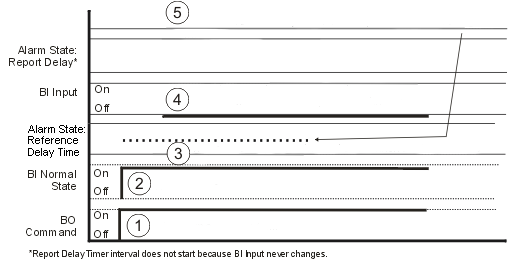Multistate alarm delay examples
When attaching alarm extensions to binary objects, we recommend that the alarm extension be attached to a Binary Input Object (BI). When the Binary Output Object (BO) is commanded On, the command is seen by the command reference of the BI and triggers the Alarm State: Reference Delay Timer, which changes the Normal state of the associated BI. The Reference: Input of the BI should change to match the new Normal state during the time set by the Alarm State: Reference Delay Timer. If it does not, the BI immediately goes into Alarm upon expiration of the Reference Delay Time. If the BI Reference: Input changes to match the new Normal state, then the Alarm State: Report Delay Timer starts. The Alarm State: Report Delay time does not delay delivery of a previously generated report. It delays the analysis of the BI object for an alarm condition until the Report Delay time has passed. Once the Report Delay time passes, the BI is analyzed for Alarm conditions.
For example, with a BO controlling a fan and a BI with an Alarm Extension set using the BO as an Input reference, two possible conditions are affected by the Alarm State delay timers:


